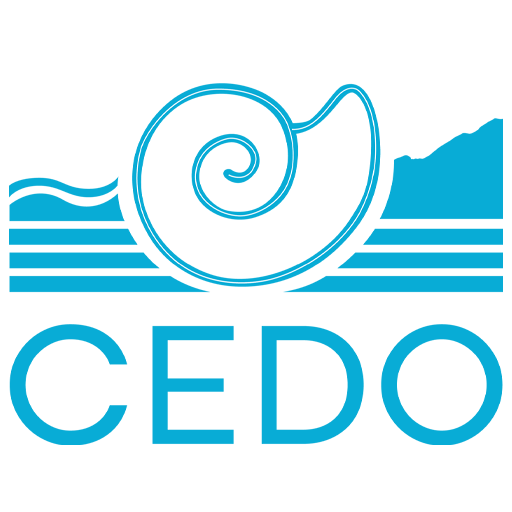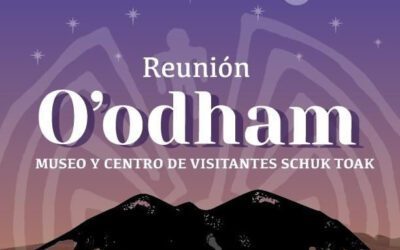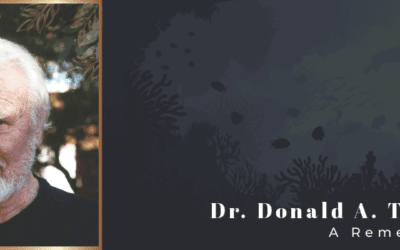[vc_row][vc_column][vc_separator][vc_column_text]By: M.S. René Loaiza, Sustainable Fisheries and Aquaculture Manager, CEDO[/vc_column_text][/vc_column][/vc_row][vc_row][vc_column width=”1/2″][vc_single_image image=”1361″ img_size=”full” onclick=”link_image”][/vc_column][vc_column width=”1/2″][vc_column_text]Fishing represents the livelihood and income for approximately 12 million people around the world. Around 90% of these people fish in small boats.
The Gulf of California in Mexico is a provider of food and employment for approximately 50,000 people who operate around 25,000 small vessels. The Sea of Cortez is a semi-closed sea with massive fishing resources and strong environmental variations.[/vc_column_text][/vc_column][/vc_row][vc_row][vc_column][vc_column_text]This region has exceptional, worldwide recognized tides that may reach up to 9 m on new moon and full moon days. Changing winds and seasonal climate and current changes and the characteristics of the different ecosystems where fishing is practiced make this activity extremely dynamic and a source of great pride and satisfaction for the fishermen who manage to understand and master fishing in these waters.[/vc_column_text][vc_text_separator title=”PRODUCTIVITY AND TRADITION” title_align=”separator_align_left”][/vc_column][/vc_row][vc_row][vc_column width=”1/2″][vc_single_image image=”1343″ img_size=”full” onclick=”link_image”][vc_single_image image=”1340″ img_size=”full” onclick=”link_image”][/vc_column][vc_column width=”1/2″][vc_column_text]Specifically, the northern Gulf of California (about 28 ° north) that comprises the region from the large islands of the Gulf of California to the Colorado River Delta, is considered one of the most productive ecosystems in the world.
Approximately 2,100 vessels operate in this region, including vessels from the fishing communities of the municipalities of Caborca, Puerto Peñasco, and Golfo de Santa Clara in Sonora, and San Felipe in Baja California.
Historically and for thousands of years, the coastal fishery resources of the Upper Gulf of California and the Colorado River Delta were used by indigenous groups such as the O’odham, Cocopah, and Hohokam. In the 20s of the last century, as a result of the growing Chinese demand for totoaba (Totoaba macdonaldi) and its increasingly scarce production in the Guaymas region, the fishermen of primarily southern Sonora and Sinaloa began to venture to the arid and difficult northernmost lands of the Gulf of California to fish.
It is thanks to fishing and the fisherfolk that people managed to tame the harsh conditions of these desert coasts, giving way to beautiful coastal cities.[/vc_column_text][/vc_column][/vc_row][vc_row][vc_column][vc_text_separator title=”CHALLENGES AND CONFLICTS” title_align=”separator_align_left”][vc_column_text]However, this noble activity faces great challenges including environmental conflicts for protecting endemic species, the effects of the activity of criminal groups, overfishing, a fishing embargo, and other factors still difficult to understand such as climate change. It’s estimated that in the period from 2020 to 2029 an increase of 0.5 ° C to 1 ° C in global ocean temperature will occur and will generate changes in current and upwelling patterns and in the frequency and intensity of oceanographic anomalies. Even in the northern region of the Gulf of California, changes in seasonal temperature patterns have already been noted, leading to expected increases of 0.5-1 m in mean sea level throughout the Gulf of California region in the next 100 years.[/vc_column_text][/vc_column][/vc_row][vc_row][vc_column][vc_text_separator title=”THE ART OF FISHING” title_align=”separator_align_left”][vc_column_text]Traditionally, fishermen have taken advantage of the fishing products in groups, mainly based on the fishing gear that they best master, the seasonal availability of the products, and the fishing areas they know best. This is why there are groups of fishermen dedicated to net fishing that fish manta, shovelnose guitarfish, angel, shark, sierra, Gulf croaker, shrimp, corvina, mullet, and Gulf curvina. Other groups of fishermen use the longline to capture mainly Gulf coney and Goldspotted sandbass. Other groups of diver fishermen catch various types of scallops, snails, octopus, clams, and sea cucumber, and lastly, others catch crab and snail with traps.[/vc_column_text][/vc_column][/vc_row][vc_row][vc_column width=”1/4″][vc_single_image image=”1350″ img_size=”full” alignment=”center” onclick=”link_image”][/vc_column][vc_column width=”1/4″][vc_single_image image=”1351″ img_size=”full” alignment=”center” onclick=”link_image”][/vc_column][vc_column width=”1/4″][vc_single_image image=”1353″ img_size=”full” alignment=”center” onclick=”link_image”][/vc_column][vc_column width=”1/4″][vc_single_image image=”1354″ img_size=”full” alignment=”center”][/vc_column][/vc_row][vc_row][vc_column][vc_column_text]Being a fisherman means having a way of life with a unique and close relationship with the marine environment because fishermen depend on a constantly regenerating sea to “harvest” the delicious products that we all enjoy.
For fishermen there are no set workdays or holidays. The environmental conditions and the availability of fishery products govern their activity. A fisherman can work long hours for many consecutive days and suddenly have to spend days or weeks waiting for conditions to improve in order to go out to sea again.[/vc_column_text][/vc_column][/vc_row][vc_row][vc_column][vc_message message_box_style=”3d” message_box_color=”peacoc” icon_fontawesome=”fas fa-heart”]May this space serve to offer the biggest recognition and gratitude to all the fishermen who are now alive and those who have passed who have dedicated their lives to allow us to enjoy the fruits of the sea.
CEDO Intercultural Team.[/vc_message][vc_separator][/vc_column][/vc_row][vc_row][vc_column][vcj_team_member image=”1377″ name=”About the Author:” layout=”style3″ image_ratio=”portrait” color_name=”#ca972e”]
Rene D. Loaiza
Manager of Sustainable Fisheries and Aquaculture of Intercultural Center for the Study of Deserts and Oceans.
Biochemical Engineer in the area of marine science, with a specialty in sustainable development and a master’s degree in Sustainability science.
Originally from Guaymas, married with three children. Work experience in shrimp aquaculture, experience as a permittee in riparian fishing, in marketing, processing and export of crab and scale for 11 years.
[/vcj_team_member][vc_column_text]I have been a fisheries and social participation technician for 12 years with CEDO, a technician in technological baccalaureate for 4 years, a diving instructor for 2 years. I enjoy collaboration and teamwork. My areas of interest are fisheries, fisheries management, marine ecosystems, biodiversity, teaching, diving and community participation. I like to plan, execute, document, analyze, write and spread our work.[/vc_column_text][/vc_column][/vc_row][vc_row][vc_column][vc_column_text][ctct form=”1153″ show_title=”false”][/vc_column_text][/vc_column][/vc_row]









0 Comments